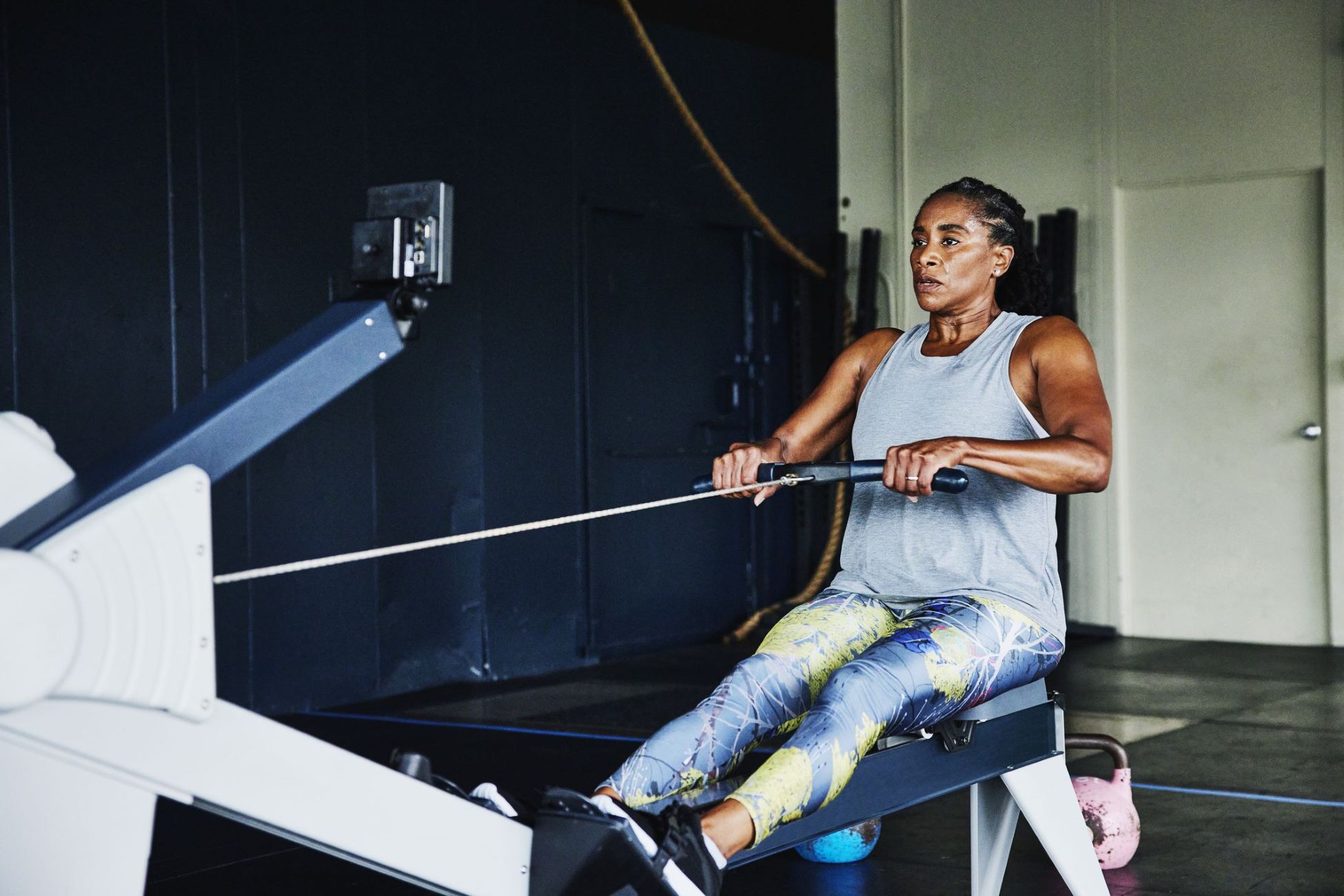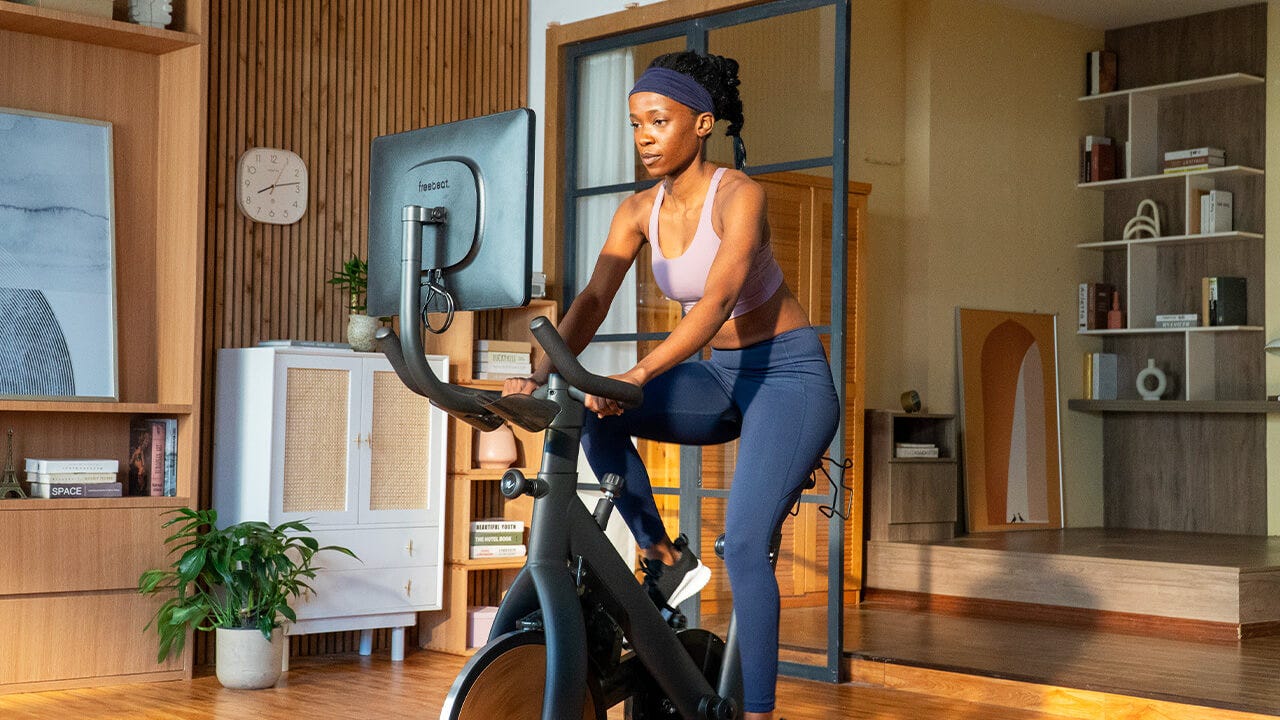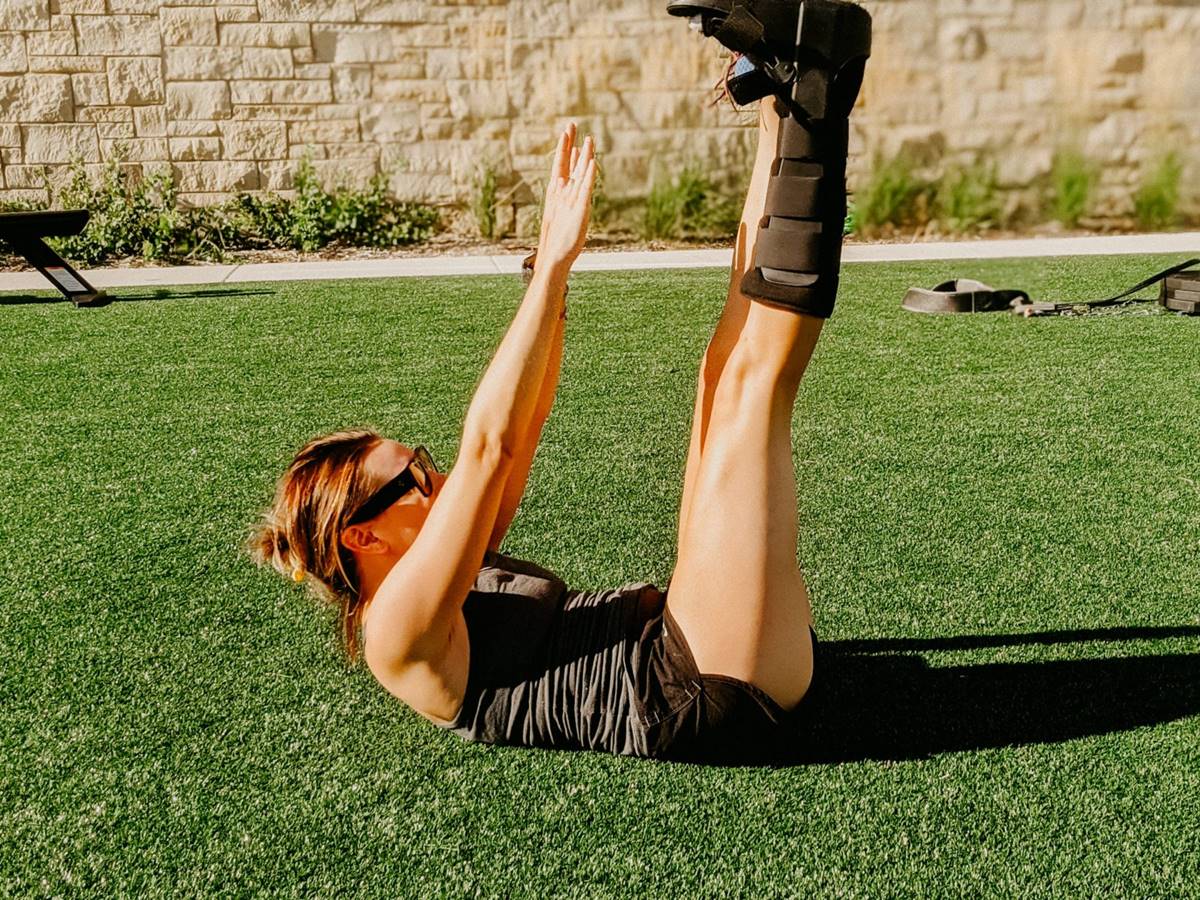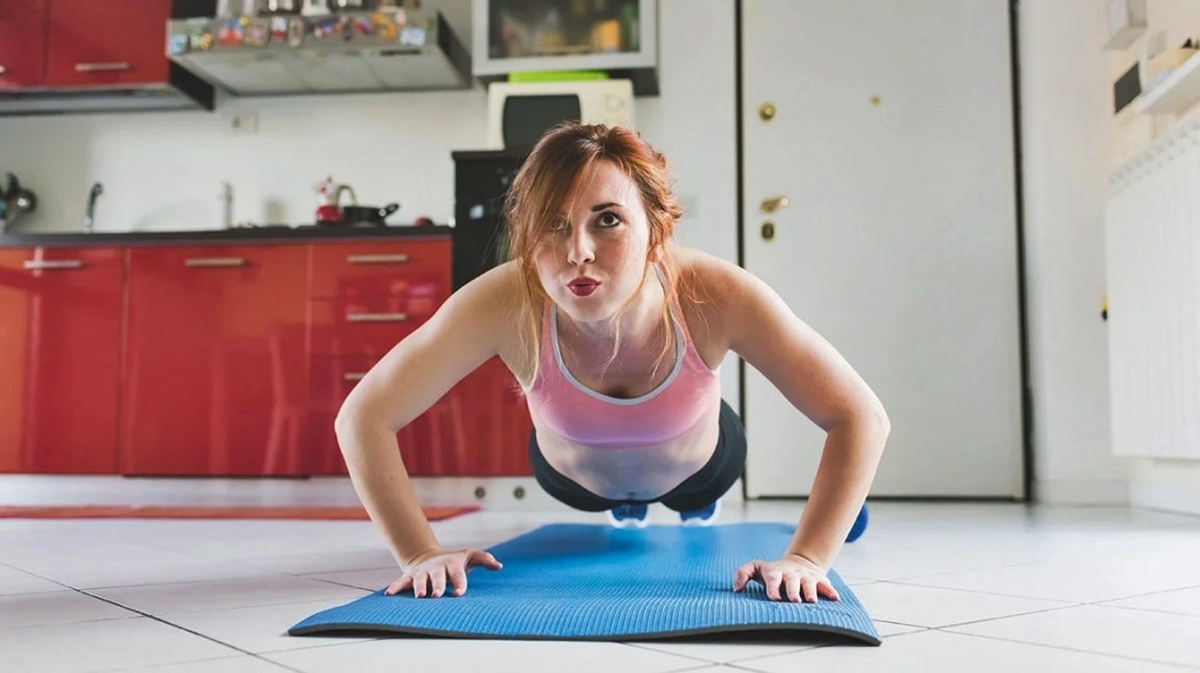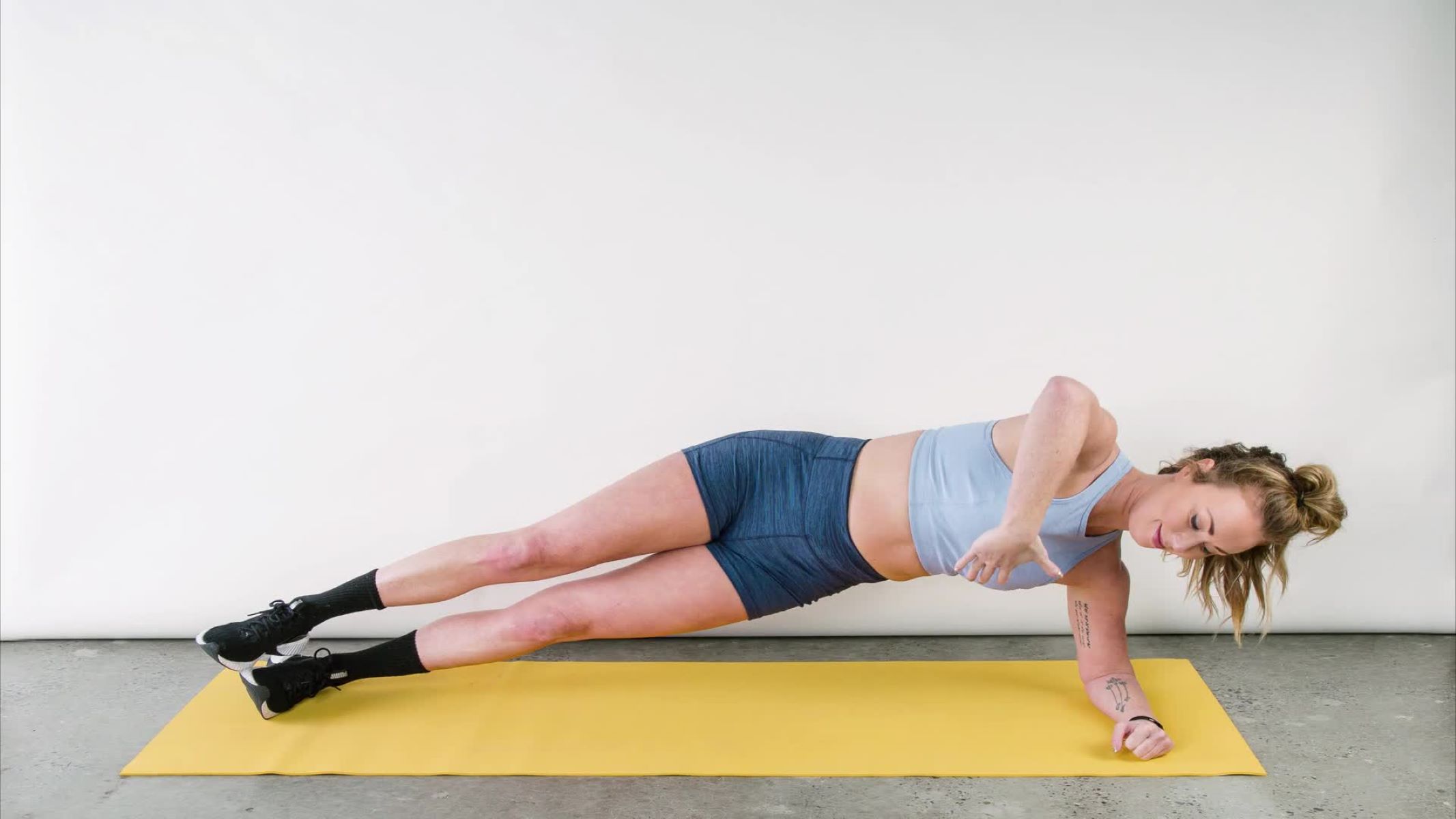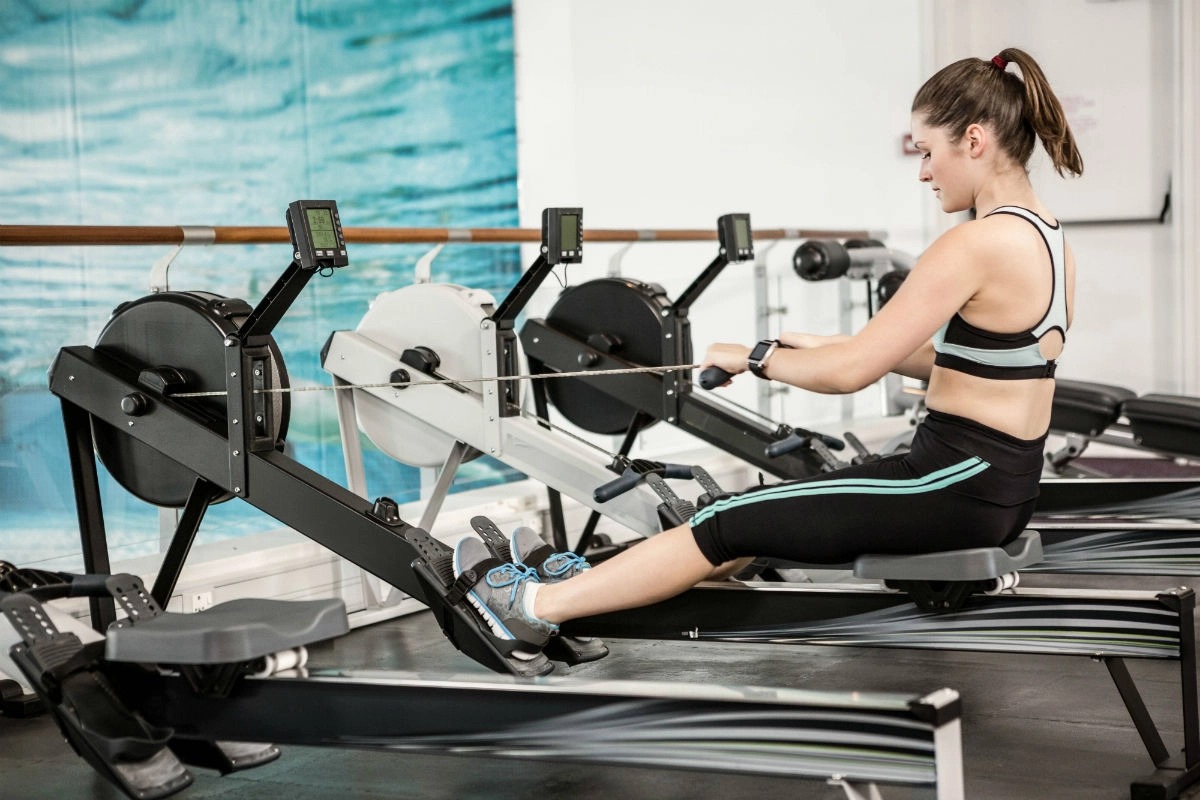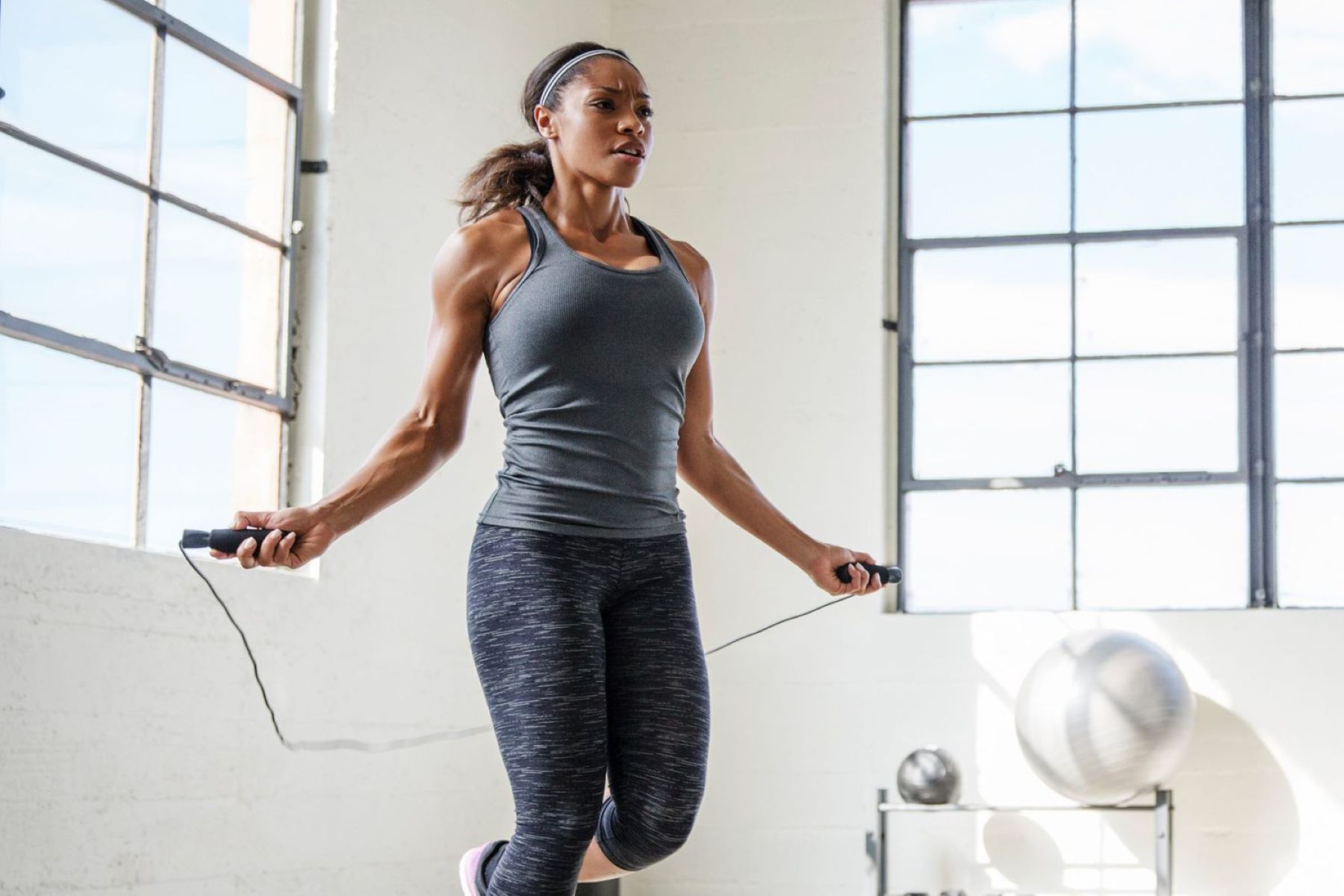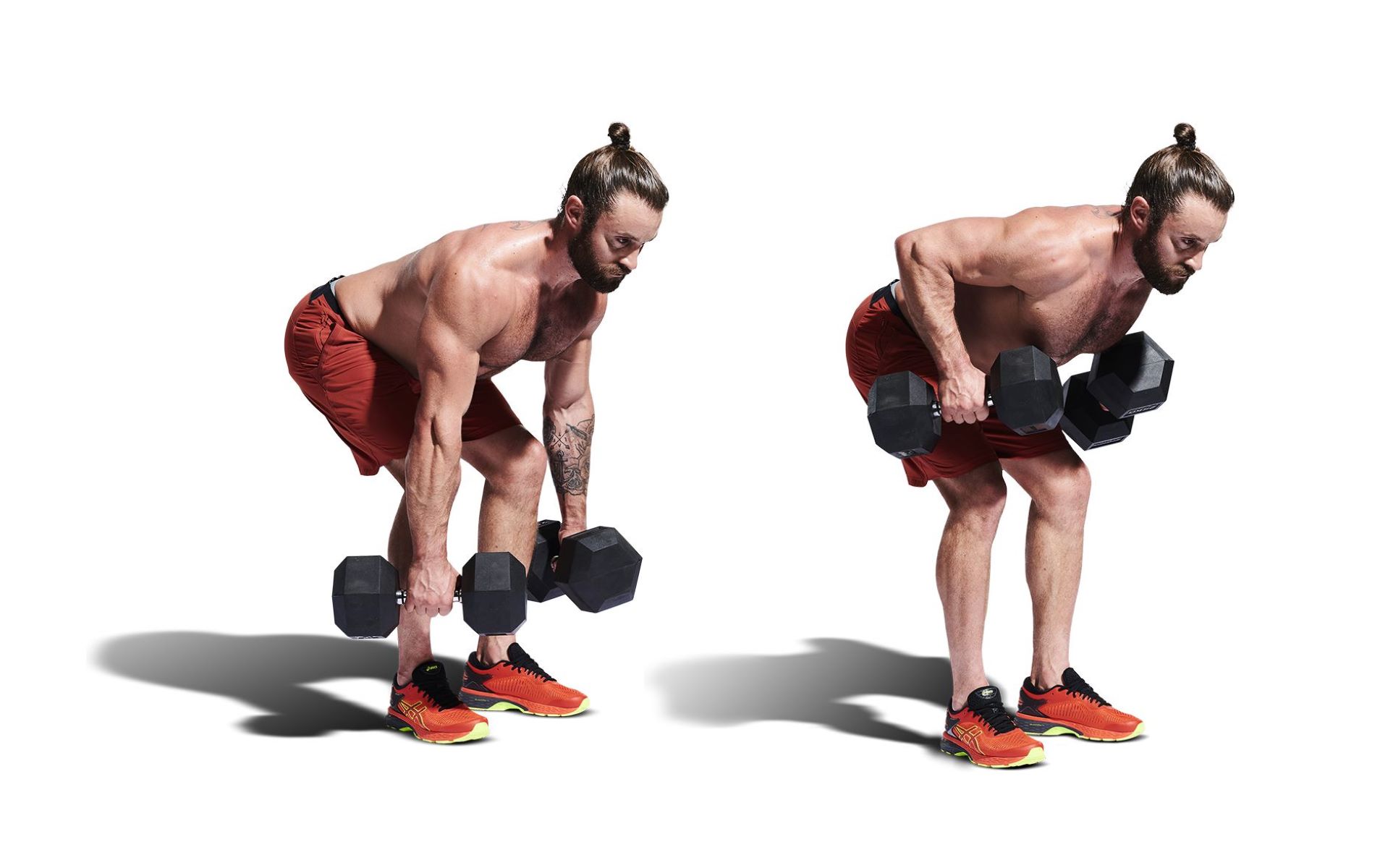

Featured
What Do Rows Workout
Modified: January 2, 2024
Find out what rows workout is and how to incorporate it into your fitness routine. Get featured exercises and tips to maximize your results.
Introduction
Rowing exercises are a fantastic way to improve your overall fitness and achieve your fitness goals. Not only do rowing workouts provide a full-body cardiovascular workout, but they also target a wide range of muscles in your body. Whether you’re a beginner or an experienced athlete, incorporating rowing exercises into your fitness routine can bring numerous benefits.
Rowing is a low-impact exercise that puts minimal stress on your joints, making it suitable for people of all fitness levels and ages. It provides a challenging workout while reducing the risk of injury, unlike other high-impact exercises. As you row, you engage multiple muscle groups, including your legs, back, core, and arms, making it a highly efficient exercise for strengthening and toning your entire body.
Beyond the physical benefits, rowing also offers mental and emotional benefits. The repetitive motion of rowing, combined with the peaceful rhythm of gliding across the water or using a rowing machine, can have a calming and meditative effect. It provides an opportunity to disconnect from the demands of daily life and focus on the present moment, promoting stress relief and mental well-being.
Whether you choose to row outdoors in a boat or use a rowing machine at the gym, the versatility of rowing workouts allows you to customize your training to suit your preferences and fitness level. You can adjust the intensity and resistance, making it a workout that can be tailored to meet your specific goals, whether you’re aiming for weight loss, increased endurance, or muscle building.
In this comprehensive guide, we will explore the various benefits of rowing exercises, the specific muscles targeted by rowing, proper rowing technique, different types of rowing workouts, common mistakes to avoid, and safety precautions. By the end of this article, you’ll have all the information you need to incorporate rowing into your fitness routine and reap the rewards of this highly effective workout.
Benefits of Rowing Exercises
Rowing exercises offer a wide range of benefits for both your physical and mental well-being. Let’s explore some of the key advantages of incorporating rowing into your fitness routine.
1. Full-body workout: Rowing engages multiple muscle groups, including your legs, back, core, and arms. As you push off with your legs, drive back with your core, and pull with your arms, you’re working your entire body, resulting in a comprehensive workout.
2. Cardiovascular fitness: Rowing is an excellent aerobic exercise that increases your heart rate and improves your cardiovascular endurance. By regularly engaging in rowing exercises, you can enhance your lung capacity and strengthen your heart, leading to improved overall stamina and fitness levels.
3. Low impact: Unlike high-impact exercises like running or jumping, rowing is a low-impact sport that puts minimal stress on your joints. This makes it an ideal workout option for individuals with joint issues or those looking for a low-impact alternative to other cardio exercises.
4. Weight loss and calorie burn: Rowing is a highly effective calorie-burning exercise. It can help you shed unwanted pounds and maintain a healthy weight. A vigorous rowing workout can burn up to 600 calories per hour, making it an efficient way to support your weight loss goals.
5. Strength and muscle tone: Rowing exercises involve both pushing and pulling motions, which help build muscular strength and endurance. It targets muscles in your arms, shoulders, back, and legs, helping you develop lean muscle mass while improving overall muscle tone.
6. Improved posture and core stability: The rowing motion requires a strong core and proper form. Regular rowing exercises can help improve your posture and strengthen your core muscles, leading to better stability and reduced risk of back pain.
7. Mental well-being: Rowing provides an opportunity to escape the stresses of daily life and engage in a mindful and rhythmic activity. The rhythmic nature of rowing, whether on the water or using a rowing machine, can have a calming effect on the mind, reducing stress and promoting mental relaxation.
8. Versatility and accessibility: Rowing exercises can be performed in various settings, whether you choose to row outdoors in a boat, use a rowing machine at the gym, or even participate in indoor rowing classes. This versatility makes it accessible to individuals of all fitness levels and preferences.
Incorporating rowing exercises into your fitness routine can bring numerous benefits to your overall well-being. Whether you’re looking for a challenging full-body workout, improved cardiovascular fitness, weight loss, or enhanced mental relaxation, rowing can be an excellent choice. So, grab an oar or hop on a rowing machine, and start experiencing the amazing benefits of rowing workouts yourself.
Muscles Targeted by Rowing
Rowing exercises are known for their ability to engage multiple muscle groups simultaneously, providing a comprehensive full-body workout. Let’s take a closer look at the specific muscles targeted by rowing and how they are strengthened through this exercise.
1. Legs: When you push off against the footplates during the rowing stroke, you engage your leg muscles, including the quadriceps, hamstrings, and calves. The leg drive is what initiates the power behind the rowing stroke, making it an effective way to strengthen and tone your leg muscles.
2. Back and Shoulders: As you pull the handle towards your body, your back muscles, specifically the muscles of your upper back (rhomboids, traps, and latissimus dorsi), are engaged. Rowing helps to develop a strong and well-defined back while improving posture and reducing the risk of back pain.
3. Core: Your core muscles, including the abdominals, obliques, and lower back muscles, play a crucial role in stabilizing your body during the rowing stroke. By maintaining a strong and stable core, you not only enhance the efficiency of your rowing technique but also improve functional strength and balance.
4. Arms and Shoulders: The pulling motion in rowing works the muscles in your arms, particularly the biceps and forearms. Additionally, the shoulders, including the deltoids and rotator cuff muscles, are involved in the pulling motion and play a vital role in controlling the movement of the oars or handle.
5. Chest: The muscles of the chest, including the pectoralis major and minor, are also engaged during the rowing stroke as you bring the handle toward your body. Rowing helps to develop a strong and well-toned chest, contributing to a balanced upper body appearance.
6. Hip Flexors: The hip flexor muscles, located in the front of your hips, are engaged during the leg drive phase of the rowing stroke. Regular rowing exercises can help strengthen and increase flexibility in the hip flexors, which can be beneficial for overall hip health and improved range of motion.
By targeting these major muscle groups, rowing exercises provide a comprehensive and efficient workout for your entire body. Whether your goal is to build strength, improve muscle tone, or enhance overall fitness, incorporating rowing into your exercise routine can help you achieve these objectives.
Proper Technique for Rowing
To get the most out of your rowing workout and prevent injuries, it’s important to learn and maintain proper rowing technique. The following steps outline the correct form and technique for rowing exercises.
1. Set up: Begin by sitting on the seat of the rowing machine with your feet securely strapped onto the footplates. Grip the handle with an overhand grip, keeping your hands shoulder-width apart. Sit up tall with a straight back, engaging your core muscles.
2. Catch position: Start the stroke by extending your legs fully, ensuring that your shins are vertical and your heels remain down. Lean forward from the hips, keeping your shoulders relaxed and your arms fully extended in front of you, gripping the handle.
3. Drive phase: Initiate the drive by pushing off with your legs in a controlled and powerful motion. As your legs extend, engage your core muscles and lean back slightly, keeping your back straight. Continue pushing with your legs until they are fully extended while maintaining a strong posture.
4. Arm pull: Once your legs are fully extended, initiate the arm pull by bending your elbows and pulling the handle towards your lower ribs. Focus on driving your elbows back, engaging your upper back and shoulder muscles. Keep your wrists straight and avoid excessive strain on your forearms.
5. Finish position: As you pull the handle towards your body, lean back slightly further, contracting your shoulder blades together. Your torso should be in a slight recline at this point, but be cautious not to overextend your back. Keep your core muscles engaged throughout the movement.
6. Recovery phase: Reverse the movement by first extending your arms forward, keeping them straight and allowing the handle to move away from your body. Once your arms are fully extended, start to hinge forward from your hips, allowing your knees to bend, and slide back towards the starting position. This is the recovery phase and prepares you for the next stroke.
Remember to maintain a smooth and controlled motion throughout the entire rowing stroke. Avoid jerky movements or using momentum to pull the handle, as this can lead to poor form and potential injuries. Focus on engaging the appropriate muscle groups at each phase of the stroke to maximize the effectiveness of the exercise.
It’s recommended to start with shorter rowing sessions and gradually increase the duration and intensity as you become more comfortable with the proper rowing technique. If possible, seek guidance from a certified rowing instructor or trainer to ensure you’re performing the exercise correctly and safely.
Different Types of Rowing Workouts
Rowing offers a variety of workout options to keep your routine interesting and challenging. Here are a few different types of rowing workouts you can incorporate into your fitness regimen:
1. Steady-State Rowing: This is the most common type of rowing workout where you row at a moderate intensity and maintain a consistent pace for a set duration. Steady-state rowing is ideal for building cardiovascular endurance and improving overall fitness. It allows you to sustain a continuous rowing motion without intervals or changes in intensity.
2. Interval Training: Rowing intervals involve alternating between periods of high-intensity rowing and periods of lower-intensity recovery. For example, you may row at a challenging pace for a specific distance or time (e.g., 500 meters) and then recover by rowing at a slower pace or taking a short break. Interval training is an effective way to improve both aerobic and anaerobic fitness levels.
3. Pyramid Workouts: Pyramid workouts involve gradually increasing and then decreasing the intensity or duration of the rowing intervals. For example, you might start with a short high-intensity interval, followed by a slightly longer interval, and continue increasing the duration until you reach a peak. Then, you gradually reduce the duration of the intervals back to the starting point. This type of workout challenges your endurance and helps you gauge your progress.
4. Tabata Training: Tabata workouts are high-intensity interval training (HIIT) sessions that consist of short bursts of maximum effort followed by brief recovery periods. For a rowing Tabata workout, you can row at maximum intensity for 20 seconds, then rest for 10 seconds, and repeat this cycle for a total of 4 minutes. It’s a quick but intense workout that boosts calorie burn and improves both aerobic and anaerobic fitness.
5. Long-Distance Rowing: Long-distance rowing workouts focus on endurance and stamina. These workouts involve rowing at a steady pace for longer durations, such as rowing for several kilometers or even completing a half-marathon or marathon on a rowing machine. Long-distance rowing workouts are great for building mental resilience and improving cardiovascular fitness.
6. Race Simulation: If you’re training for a rowing race or looking to challenge yourself, incorporating race simulation workouts can be beneficial. These workouts aim to simulate the conditions and intensity of an actual rowing race. You can set specific distances or time and row at race pace or gradually increase your intensity throughout the workout.
Remember to warm up properly before any rowing workout and cool down afterward to prevent muscle soreness and reduce the risk of injury. Additionally, it’s essential to listen to your body and adjust the duration and intensity of the workouts based on your fitness level and progress.
By incorporating different types of rowing workouts into your routine, you’ll keep your training varied and exciting while targeting different aspects of your fitness. Whether you’re looking to improve endurance, build strength, or boost your overall fitness level, there’s a rowing workout style that suits your goals and preferences.
Common Mistakes to Avoid While Rowing
Rowing is a highly effective exercise, but it’s essential to perform it with proper form to maximize its benefits and avoid potential injuries. Here are some common mistakes to watch out for and tips on how to correct them:
1. Poor posture: One of the most common mistakes in rowing is hunching or slumping the shoulders, rounding the back, or collapsing the core. This can put strain on your back and lead to discomfort or injury. To correct this, focus on sitting up tall with a straight back, keep your shoulders relaxed, and engage your core muscles throughout the stroke.
2. Gripping the handle too tightly: Holding onto the handle with excessive tension in your hands, wrists, and forearms can lead to muscle fatigue and decreased efficiency in your rowing stroke. Maintain a firm but relaxed grip on the handle, allowing for fluid and controlled movements.
3. Using only your arms: Rowing is primarily a leg-driven exercise, but many beginners make the mistake of relying too heavily on their arm muscles. Remember to initiate the stroke with a powerful leg drive, engaging the large muscles of your legs and transferring that energy through your core and arms.
4. Rushing the stroke: Avoid rushing through the rowing stroke by using excessive speed. Maintain a controlled and smooth motion, focusing on the correct sequencing of the leg drive, core engagement, and arm pull. Slowing down and maintaining proper form will lead to better muscle engagement and a more effective workout.
5. Overreaching at the catch: Overreaching, or excessively leaning forward at the start of the stroke, can strain your lower back and reduce the power generated from your legs. Instead, aim for a slight forward lean from the hips while keeping your back straight. This allows for a strong leg drive and maximum power output.
6. Neglecting proper recovery: The recovery phase of the rowing stroke is just as important as the drive phase. Avoid rushing back to the starting position and concentrate on a controlled and relaxed recovery. Allow your arms to extend fully, hinge forward from the hips, and glide back smoothly before starting the next stroke.
7. Ignoring technique for higher stroke rate: When aiming for a higher stroke rate, many rowers sacrifice proper technique. It’s crucial to maintain correct form and posture, even at higher speeds. Solidify your technique at a lower stroke rate before gradually building up to a faster pace.
8. Neglecting rest and recovery: Rest days are crucial for recovery and preventing overuse injuries. Avoid rowing intensely every day. Allow your body time to repair and recover, so you can continue to progress and improve without burning out or risking injury.
By being mindful of these common mistakes and focusing on proper technique, you can maximize the effectiveness and safety of your rowing workouts. Consider working with a qualified rowing coach or trainer to ensure you’re performing the exercise correctly and to address any specific concerns or challenges you may have.
Safety Precautions for Rowing Exercises
While rowing exercises are generally safe and low-impact, it’s important to take certain safety precautions to prevent injuries and ensure a safe and effective workout. Here are some key safety guidelines to follow when engaging in rowing exercises:
1. Warm-up and cool-down: Before starting any rowing session, take the time to properly warm up your body. This can include dynamic stretches, light cardio exercises, and mobility drills to prepare your muscles and joints for the workout. Cooling down with gentle stretches after rowing can help reduce muscle soreness and promote recovery.
2. Start with proper technique: Learning and practicing proper rowing technique is crucial for both maximizing your workout and preventing injuries. If you’re new to rowing, consider working with a qualified instructor to ensure you’re using the correct form and technique from the beginning. It’s easier to build good habits than to correct bad ones.
3. Gradually increase intensity and duration: When starting a rowing program, it’s important to gradually increase the intensity and duration of your workouts. This allows your body to adapt to the demands of rowing and reduces the risk of overuse or training-related injuries. Listen to your body’s signals and avoid pushing yourself too hard too quickly.
4. Proper hydration: Staying hydrated is essential for any exercise, including rowing. Make sure to drink enough water before, during, and after your rowing workout to stay properly hydrated. Dehydration can negatively impact your performance and increase the risk of muscle cramps and fatigue.
5. Use appropriate resistance: If you’re using a rowing machine, adjust the resistance level to a suitable setting for your fitness level and goals. Start with a lower resistance and gradually increase it as your strength and endurance improve. This will help prevent strain and excessive stress on your muscles and joints.
6. Pay attention to your body: Rowing should challenge you, but it shouldn’t cause pain or discomfort. If you experience sharp or persistent pain during rowing, stop immediately and assess the cause. Continuous rowing with pain can lead to further injury. Listen to your body and modify or stop the exercise if necessary.
7. Check equipment and surroundings: Before using a rowing machine or getting on a boat, inspect the equipment for any damage or wear. Ensure that the footplates and straps are secure and functioning properly. Additionally, row in a well-ventilated area with enough space around you to avoid collisions and accidents.
8. Seek medical advice if needed: If you have any pre-existing medical conditions or concerns, consult with your healthcare provider before starting a rowing program. They can provide personalized guidance and recommendations based on your specific needs and help ensure your safety.
By following these safety precautions and guidelines, you can minimize the risk of injuries and enjoy a safe and effective rowing workout. Remember that taking care of your body is essential for long-term fitness progress and overall well-being.
Conclusion
Rowing exercises offer a host of benefits for your physical fitness and mental well-being. From engaging multiple muscle groups to providing a low-impact, full-body workout, rowing is a versatile and effective exercise option for people of all fitness levels.
By incorporating rowing into your fitness routine, you can improve cardiovascular endurance, strengthen and tone your muscles, promote weight loss, enhance posture, and experience the calming effects of a rhythmic and meditative exercise. Whether you choose to row on the water or use a rowing machine, the options are endless, allowing you to tailor your workouts to your goals and preferences.
Remember to focus on proper technique, avoid common mistakes, and pay attention to safety precautions to prevent injuries. Gradually increase the intensity of your workouts, stay hydrated, and listen to your body’s signals to ensure a safe and effective rowing experience.
So, whether you’re a beginner looking to add a new dimension to your fitness routine or an experienced athlete searching for a challenging workout, consider incorporating rowing exercises into your regimen. Embrace the physical and mental benefits that rowing provides while enjoying the versatility, variety, and overall satisfaction that comes with this amazing exercise.
